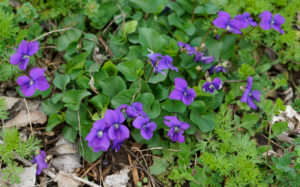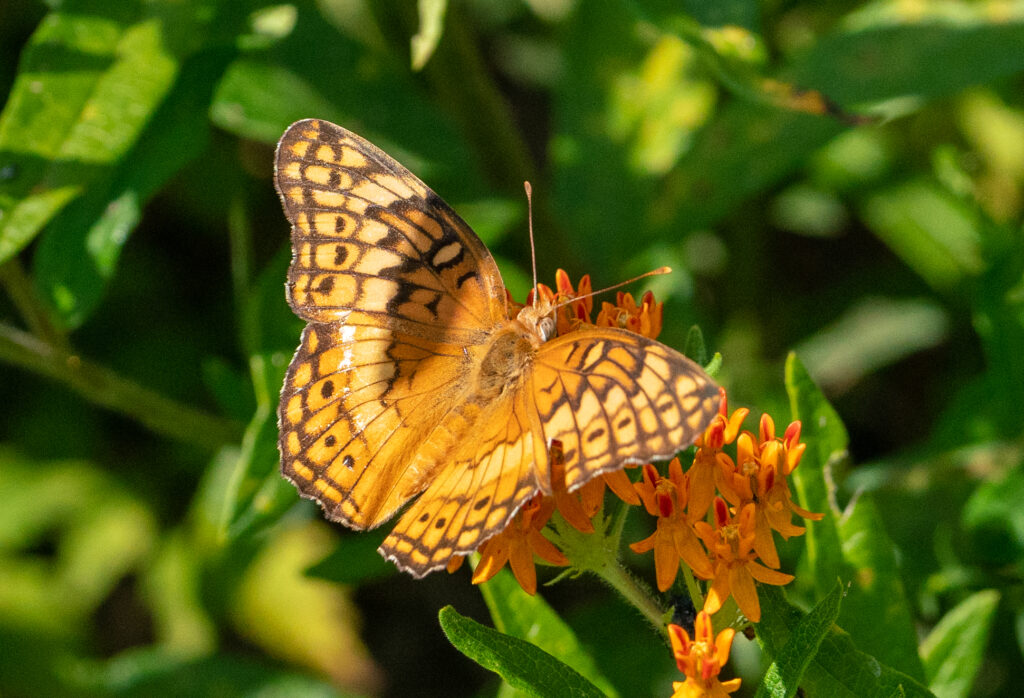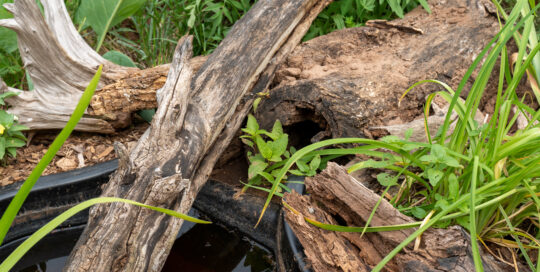Native violets: beneficial, not a bane
Views: 333

Sometimes I get frustrated with our county road maintenance. Last month they added a new head-scratcher: taking a bulldozer to peel up the roadside sod for miles. It was less devastating than some of the tree damage they do with their horrific tree- and shrub-twisting machine, but I was heartbroken because they also scoured away one of my favorite early spring ephemerals: the many native violets that line the road near our house.
I know; in some areas, violets are considered a bane to the perfect lawn. They can be aggressive when happy. For most species, that means they’re planted in moist, shaded areas, with rich soil. I acknowledge that controlling aggressive plants can become tiresome. But there are many benefits to native violets, particularly for people interested in gardening for wildlife.
Benefits of Native Violets
Native violets play an important role in supporting local wildlife. Their early spring blooms are often a much-needed pollen source for certain species of native bees. They also serve as host plants for several butterflies, including the entire family of fritillaries. Fritillary butterflies, such as the Great Spangled Fritillary (Speyeria cybele) and the Variegated Fritillary (Euptoieta claudia), lay their eggs on violet leaves, and the resulting caterpillars feed on the foliage. Some species of fritillary are becoming scarce, so planting violets is one way to help.

A Variegate Fritillary.
Additionally, birds like wild turkey, quail, and various sparrows eat violet seeds, as do various mammals. But violets are deer-resistant, making them a good choice for gardeners looking for plants that can survive their local herds.
Finally, violets may be a good option for gardeners wanting to replace their lawns with native species. Native violets are spread by seed and rhizome and can be used as a ground cover. They also specialize in areas where turf grasses may not thrive, such as bare spots under trees. They even survive under black walnut trees, which are toxic to many plants.
Four Species for Your Garden
There are well over 200 species of native violets in North America, and they can be found across the continent. There are even species that prefer sandy, dry soil. Most commonly, violet flowers are blue or purple, but some species are white or yellow. Here are four species that are suitable for gardening:
- Common Blue Violet (Viola sororia): This widespread species is native to much of eastern North America and is known for its vibrant purple flowers. Common Blue Violets prefer moist, well-drained soil and partial shade to full sun. Plant them in early spring. Their native habitat is rich, moist woods, and swamps.
- Canadian White Violet (Viola canadensis): Found in woodlands and meadows across eastern North America, Canadian White Violets are characterized by their heart-shaped leaves and white flowers, sometimes tinged with purple, with yellow centers. Plant them in moist, well-drained soil and partial to full shade. Their native habitat is moist, open wooded areas.
- Smooth Yellow Violet (Viola pubescens): This native species is widespread in eastern North America and features bright yellow flowers and glossy green leaves. Smooth Yellow Violets thrive in rich, dry soils. Their native habitat is dry woods and hardwood forests in river floodplains.
- Western Dog Violet (Viola adunca): Found in western North America, including regions of the United States and Canada, the Western Dog Violet boasts delicate blue-purple flowers and heart-shaped leaves. Plant in dry or moist sandy soil with partial shade. These violets tolerate more direct sun than many other species. Their native habitat varies from meadows and open woods to open slopes.
Meet Leslie Miller
Leslie Ann Miller shares 3.5 acres in rural Oklahoma with birds, butterflies and wide variety of animals. She is currently transforming her yard with plantings…
Leslie's Recent Posts

Creating microclimates and microhabitats to benefit wildlife






